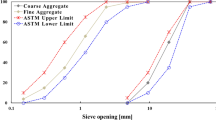Abstract
The normal practice of repairing fire-damaged concrete structures is to remove the visibly damaged portions and restore them with new concrete. However, little attention has been given to the long-term performance of fire exposed concrete which is not removed from the structure. This paper addresses this issue. Ordinary Portland cement (OPC) pastes, when exposed to a critical temperature of 400°C, undergo complete breakdown. This behaviour was attributed to the dehydration of Ca(OH)2, followed by the expansive rehydration of CaO. In contrast, partial replacement of the OPC binder with slag, had a beneficial effect in the mechanical properties of the paste after exposure to high temperatures, as slag significantly reduces the amount of available Ca(OH)2 in the cement paste. The present work provides new data regarding the long-term (after the exposure event) effect of CaO rehydration in the OPC and OPC/slag pastes. After 1 year the ongoing effect of the CaO rehydration was severe in the OPC paste while OPC/slag blends were not affected by rehydration. Compressive strength and thermogravimetric results are presented to explain this behaviour.









Similar content being viewed by others
References
Khoury GA (2000) Effect of fire on concrete and concrete structures. Progr Struct Eng Mater 2:429–447
Mendes A, Sanjayan J, Collins F (2008) Phase transformations and mechanical strength of OPC/Slag pastes submitted to high temperatures. Mater Struct 41:345–350
Diamond S (2001) Calcium hydroxide in cement paste and concrete––microstructural appraisal. Materials science of concrete special volume: calcium hydroxide in concrete (USA). American Ceramic Society, Westerville, pp 37–58
Lea FC, Stradling RE (1922) The resistance to fire of concrete and reinforced concrete. Engineering 144:341–344, 380–382
Khoury GA (1992) Compressive strength of concrete at high temperatures: a reassessment. Mag Concrete Res 44:291–309
Petzold A, Rohrs M (1970) Concrete for high temperatures, 2nd edn. Maclaren and Sons Ltd, London
Harmathy TZ (1968) Determining the temperature history of concrete constructions following fire exposure. ACI J 65:959–964
Harmathy TZ (1993) Fire safety design & concrete. Longman Scientific & Technical, UK
Matesova D, Bonen D, Surenda PS (2006) Factors affecting the resistance of cementitious materials at high temperatures and medium heating rates. Mater Struct 39:919–935
Alarcon-Ruiz L, Platret G, Massieu M, Ehrlacher A (2005) The use of thermal analysis in assessing the effect of temperature on a cement paste. Cement Concrete Res 35:609–613
Short NR, Purkiss JA, Guise SE (2000) Assessment of fire damaged concrete using colour image analysis. Constr Build Mater 15:9–15
Alonso C, Fernandez L (2004) Dehydration and rehydration processes of cement paste exposed to high temperature environments. J Mater Sci 39:3015–3024
Acknowledgment
The authors gratefully acknowledge the Australian Research Council Discovery Grant No. DP0558463 for this research project.
Author information
Authors and Affiliations
Corresponding author
Rights and permissions
About this article
Cite this article
Mendes, A., Sanjayan, J.G. & Collins, F. Long-term progressive deterioration following fire exposure of OPC versus slag blended cement pastes. Mater Struct 42, 95–101 (2009). https://doi.org/10.1617/s11527-008-9369-7
Received:
Accepted:
Published:
Issue Date:
DOI: https://doi.org/10.1617/s11527-008-9369-7




